Spain has been experiencing a major financial crisis, ever since 2009.
A boom in construction, that has now gone bust, was fueled by an expectation of continued investment by Northern Europeans ~ Germans and Brits primarily, who flock annually to Southern Spain’s kinder weather. Spain became a default destination for retirees, seeking to establish a foothold under the sun. This building boom that lasted over two decades came to a screeching halt a few years ago. The excess of housing stock is staggering and there are for sale signs, “se vende” everywhere.
Our interest in this part of Southern Spain is to look past the string of built-up coastal villages and head for the Cabo de Gata region, thankfully protected from construction. For this adventure, we base ourselves in Mojacar, a hilltop picturesque pueblo (town), with its adjacent Mojacar Playa area that, in the summer, is said to be teaming with North Europeans.
We have a home-exchange here for a month, however, being nomadic it is unlikely we will stay longer than 2 weeks. We like the flexibility of changing our environment and location spontaneously.
We travel by train for about 6 from the city of Sevilla through the changing countryside to Almeria. From the flat terrain of Andalusia around Sevilla, with fields of olive trees, to the mountainous Almeria region. The train is easy and efficient. Runs on time, comfortable and we have to laugh as we compare it to some other train rides we have had: in Sri Lanka, where we sat perched on our backpacks in the aisles with crowds of people, or in India where we sat chatting with Indian families, while sharing space. Ahhh, there is much we miss about Asia!

View from the train window of the seemingly endless fields and fields of olive trees surrounding Sevilla. Olives and olive oil are one of Spain’s biggest exports. No forest around here, just agriculture.
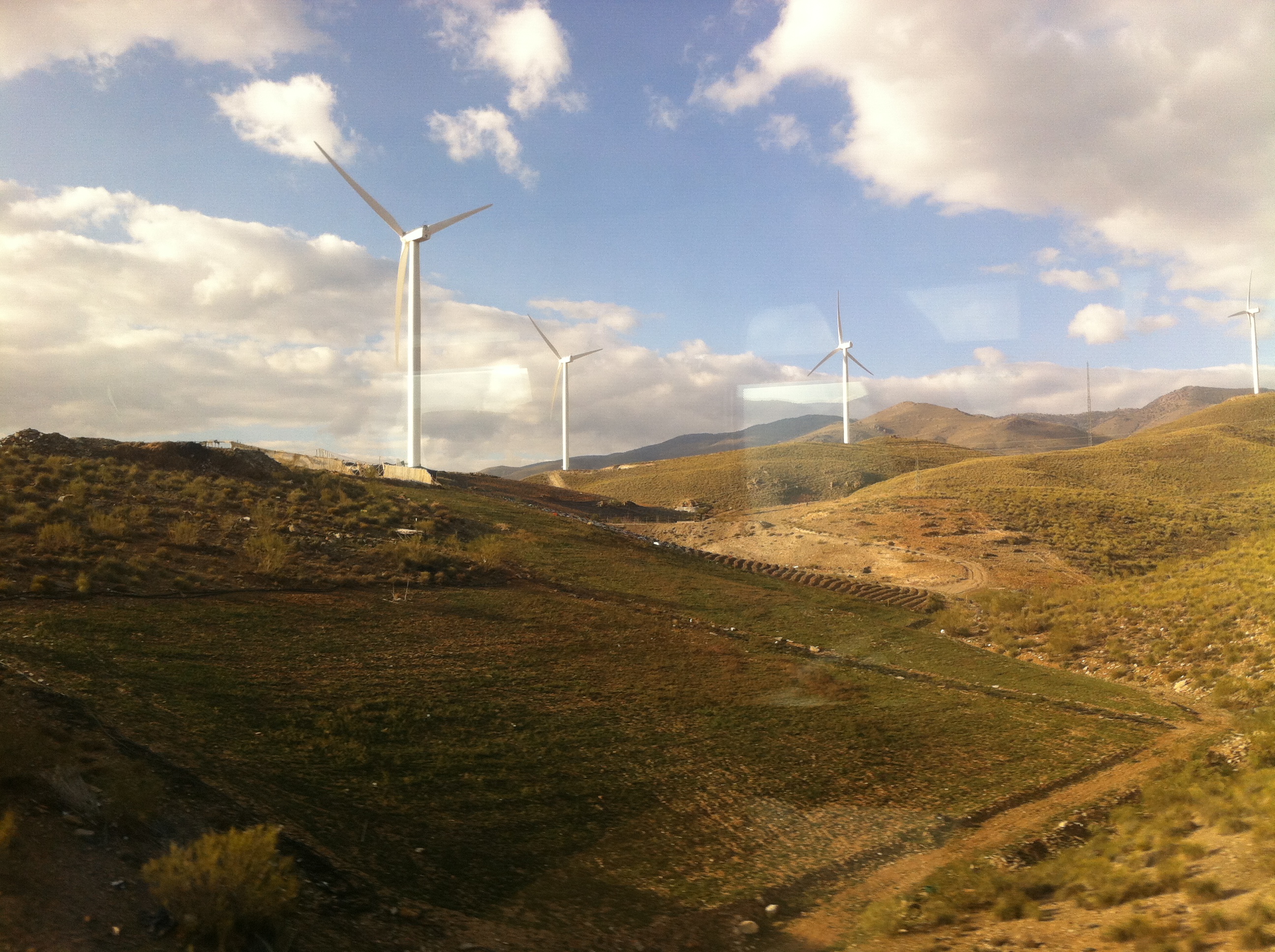
As the train heads further from Seville and closer to Granada, the landscape begins to get hilly. The high and constant winds provide an ideal environment for wind turbines.
The train goes as far as Almeria, where we stop overnight as we have had enough traveling for one day and we still need to take a bus for over an hour to get to our destination of Mojacar. We find a small hotel and take advantage of the AMAZING tapas we find in Almeria. Fresh as can be seafood, a beer and a tapa for 3 euros. Cheapest and best tapas we have had in Spain, so far. In Seville, we found that in many places fish tapas were often overcooked, or lets just say, that they were not cooked in the way that we are used to and prefer. Here in Almeria ~ we hit the jack pot food wise!
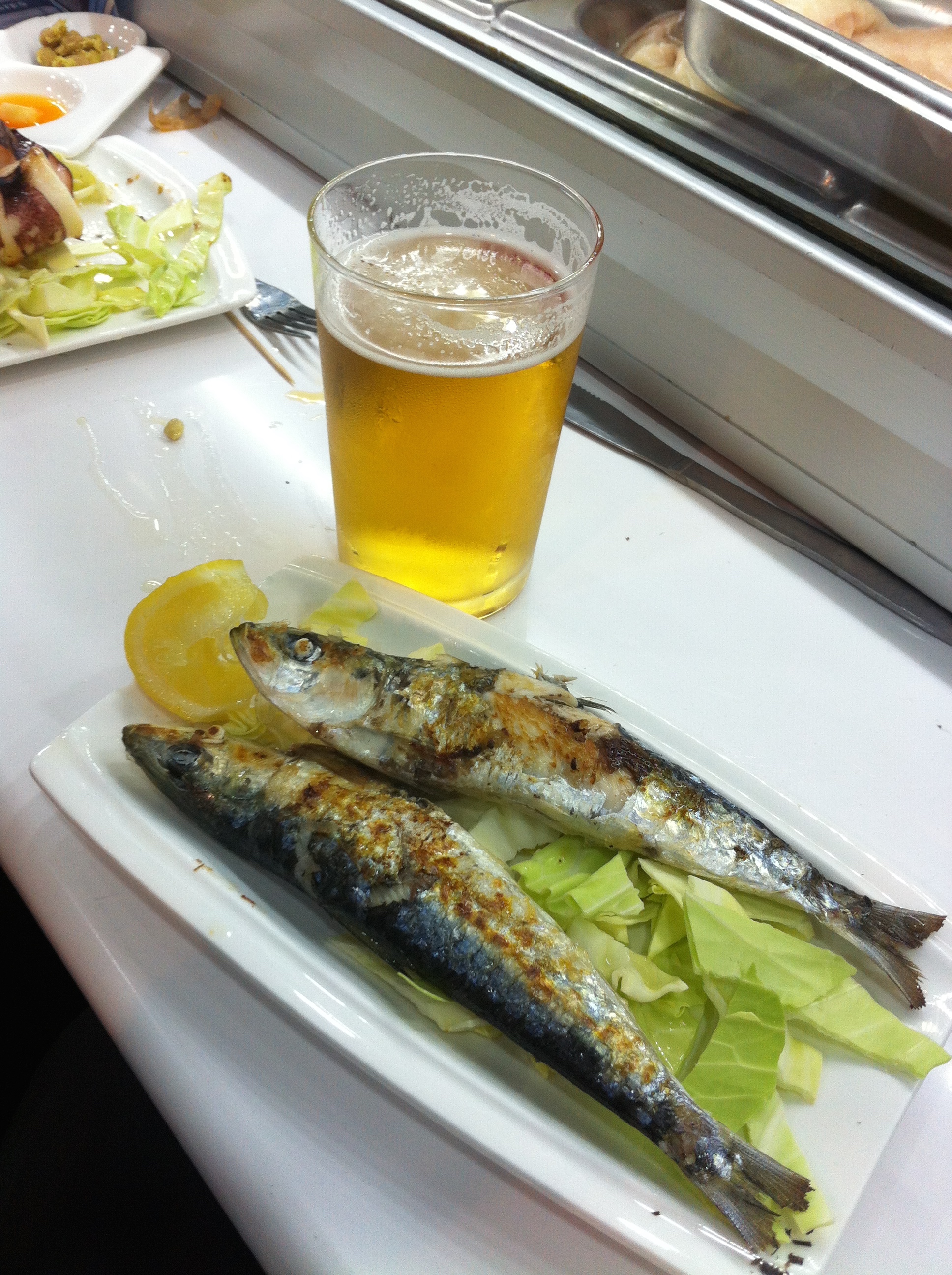
Fresh grilled sardines tapas, come with a glass of ice cold beer for 2 euros..
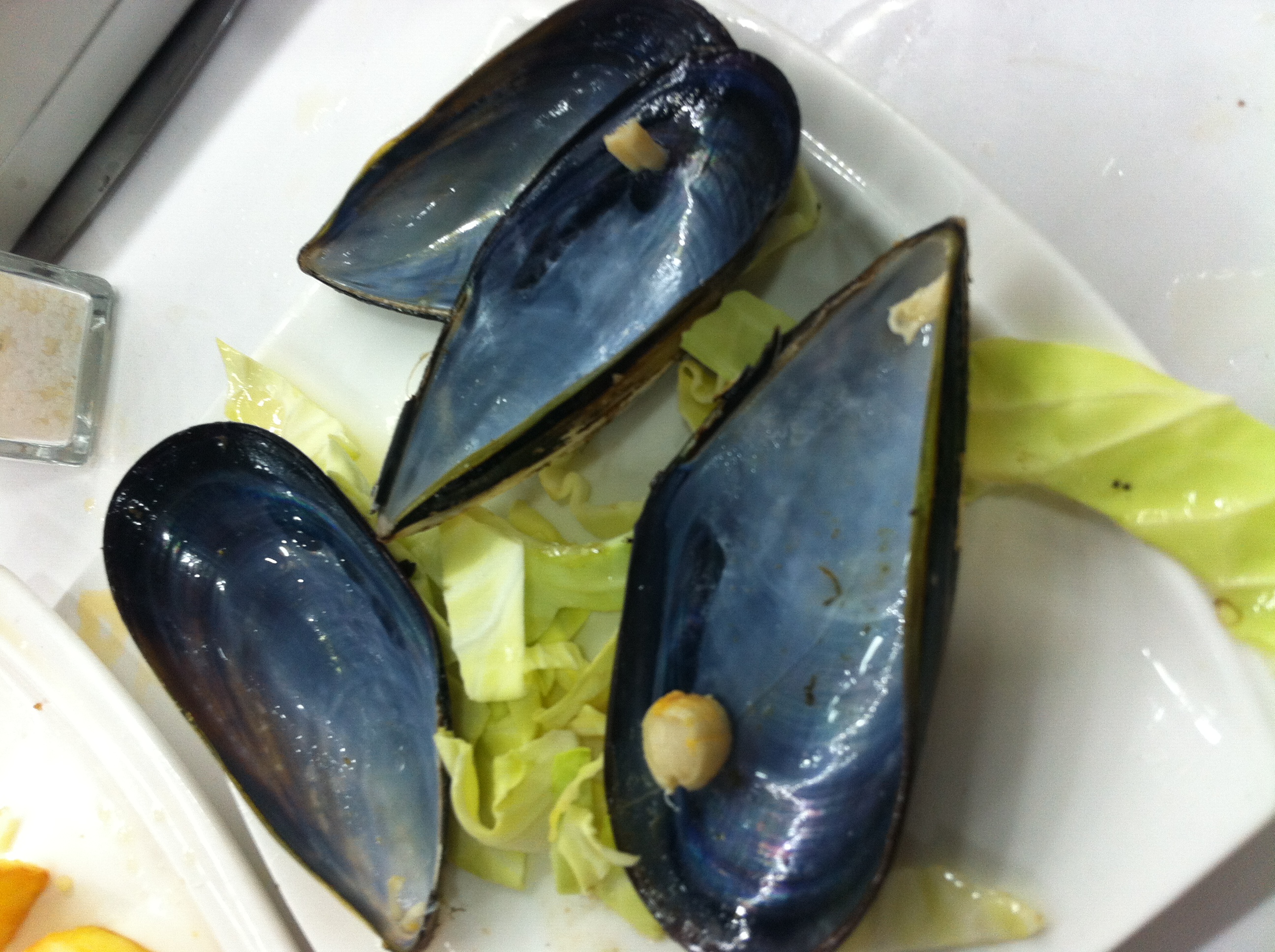
These were delicious mussels… We ate them before we could get a photo! Post mussels then 🙂
From the city of Almeria, we go by bus to Mojacar. The bus is an easy hour and a half ride, inexpensive and allows us to get a read on the desert-like landscape that leads us to the coastal village of Mojacar. We pass a few small villages along the way, such as Sobras, hanging precariously at the edge of the cliffs.
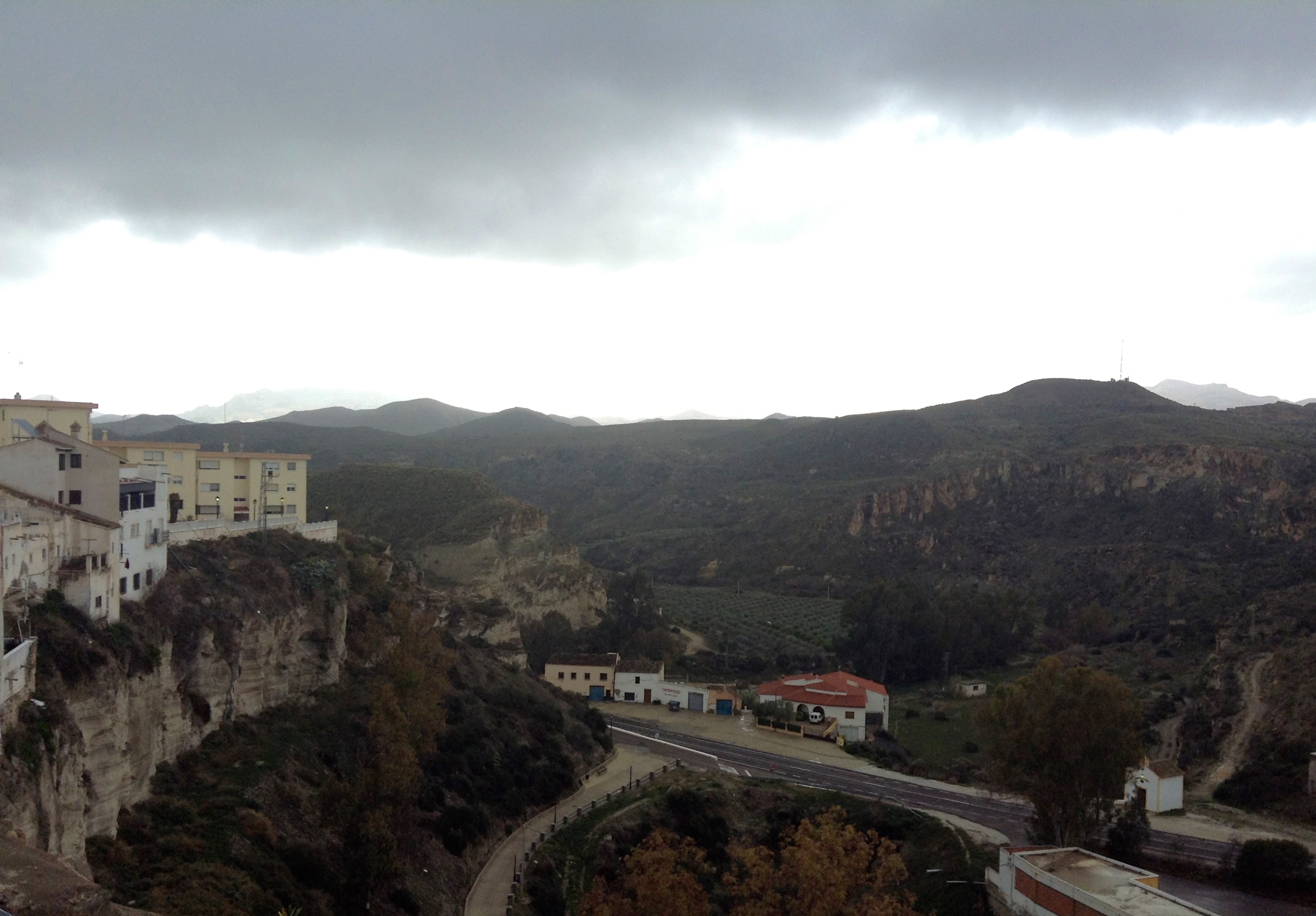
The little town of Sobras, en route to Pueblo Mojacar, is literally built perched on the edge of a cliff!
Mojacar is like two halves of a mussel shell… two halves that complement each other ~ There is the ancestral white village, perched on a mountain peak, which is Mojacar Pueblo. And then there is the other half, Mojacar Playa, which has become a tourist/vacation spot. The views from Mojacar Pueblo towards the mountains on one side and the sea on the other, are quite dramatic.

Vista from top of Pueblo Mojacar, towards the Cabrera mountain range.

This vista from the village of Mojacar, looks over the valley, over some smaller hills, towards the Mediterranean ocean.

The houses in the narrow winding streets of Mojacar are all whitewashed and have blue doors and windows.
.

One fantastic surprise about Mojacar is its fresh mountain spring water! It happens that Mojacar, since the 1700s or so, has had a practice of its villagers accessing a village water spring which has fresh, clean, mineral-rich mountain water.
To put things into context for those not fully attuned to Peta’s healthy eating/drinking philosophy, this is as if there was, for Ben, a source with free flowing cappuccino! Peta is in heaven and our travels in the region start with filling large plastic jugs of cappuccino, I mean, mountain stream water. The last time we had such fresh water from the source, was on Ometepe in Nicaragua.
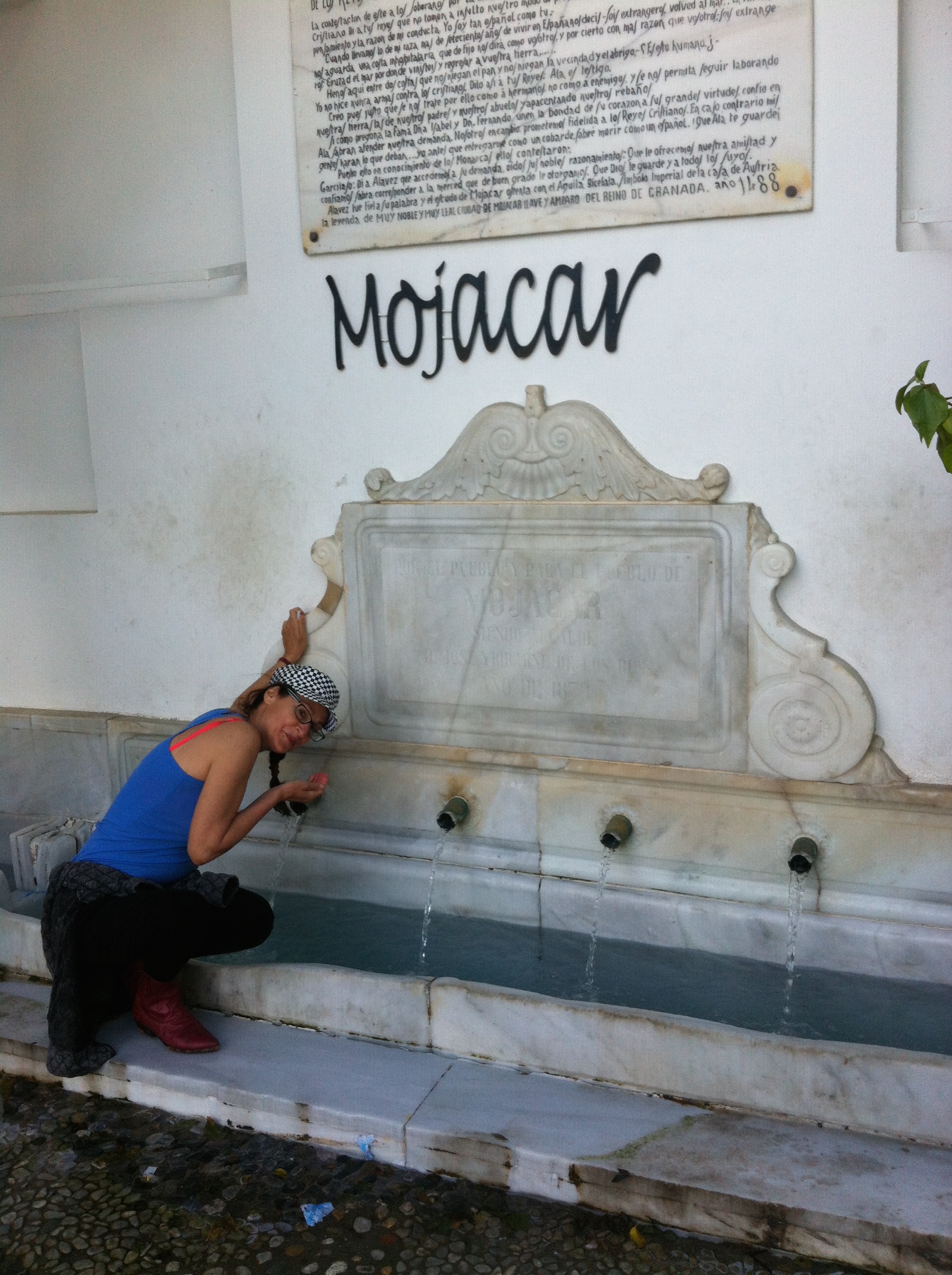
The mountain water flows constantly and has an amazingly fresh awesome “taste” to it. Locals come with huge empty bottles to fill up on their supply of water for their families.
North Europeans in search of their slice of sun have created an investment cluster at Mojacar “Playa”, which has grown into a sizable community, at the beach, a 20 minute walk down the hill from Mojacar Pueblo. Roving hills are developed, but not so much so that one loses the sight and feel for the majestic mountain range that parallels the beach. No high rises on the beach here, thankfully.
Our home exchange is but a 5 minute walk to beach. At this time of the year, there is no one in the little apartment resort complex, so we have a serene and quiet home with a patio and a view of the ocean.
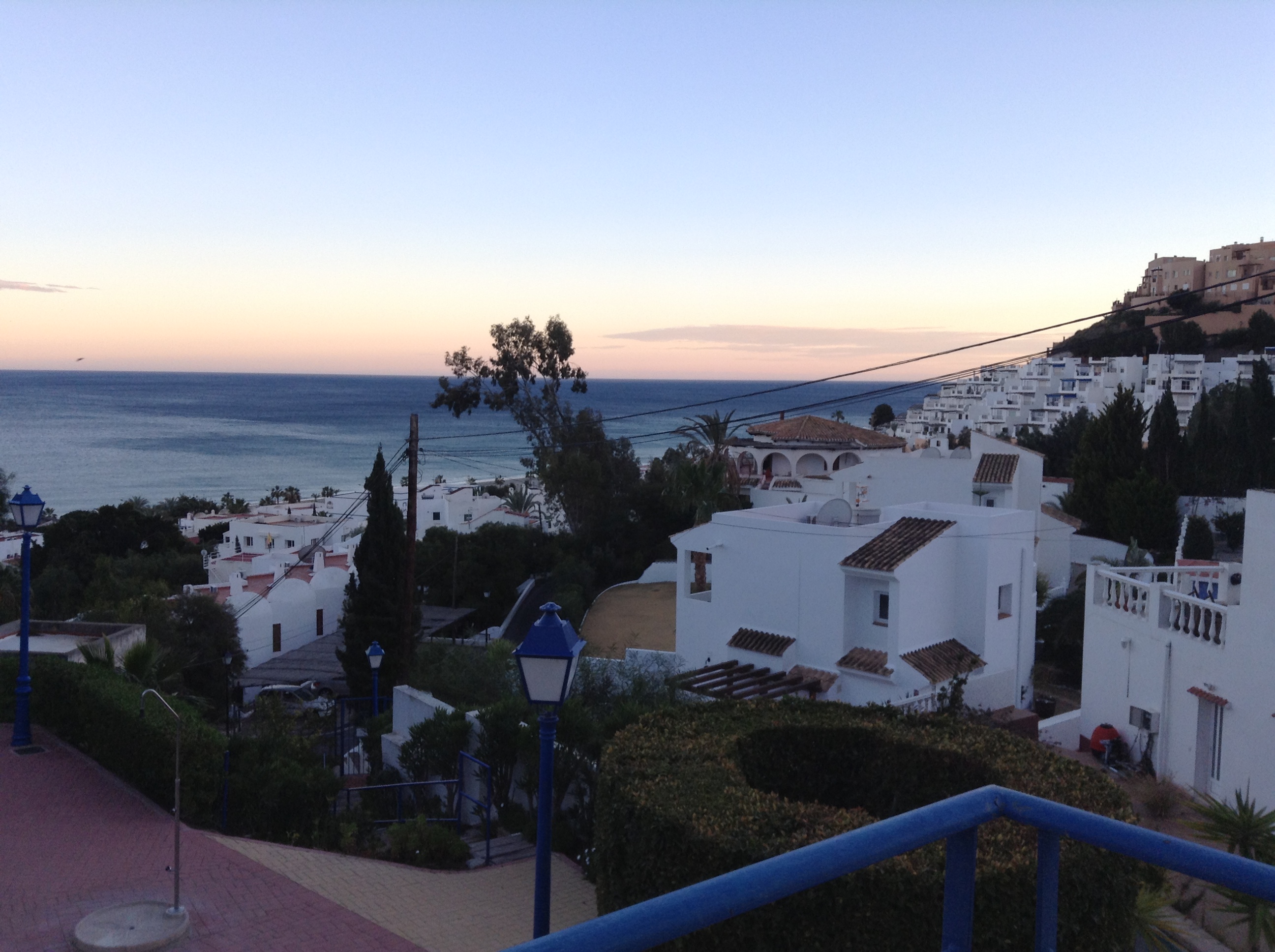
View from our patio at sunset. The area is developed, but not in a way that is offensive. No high rises in sight.
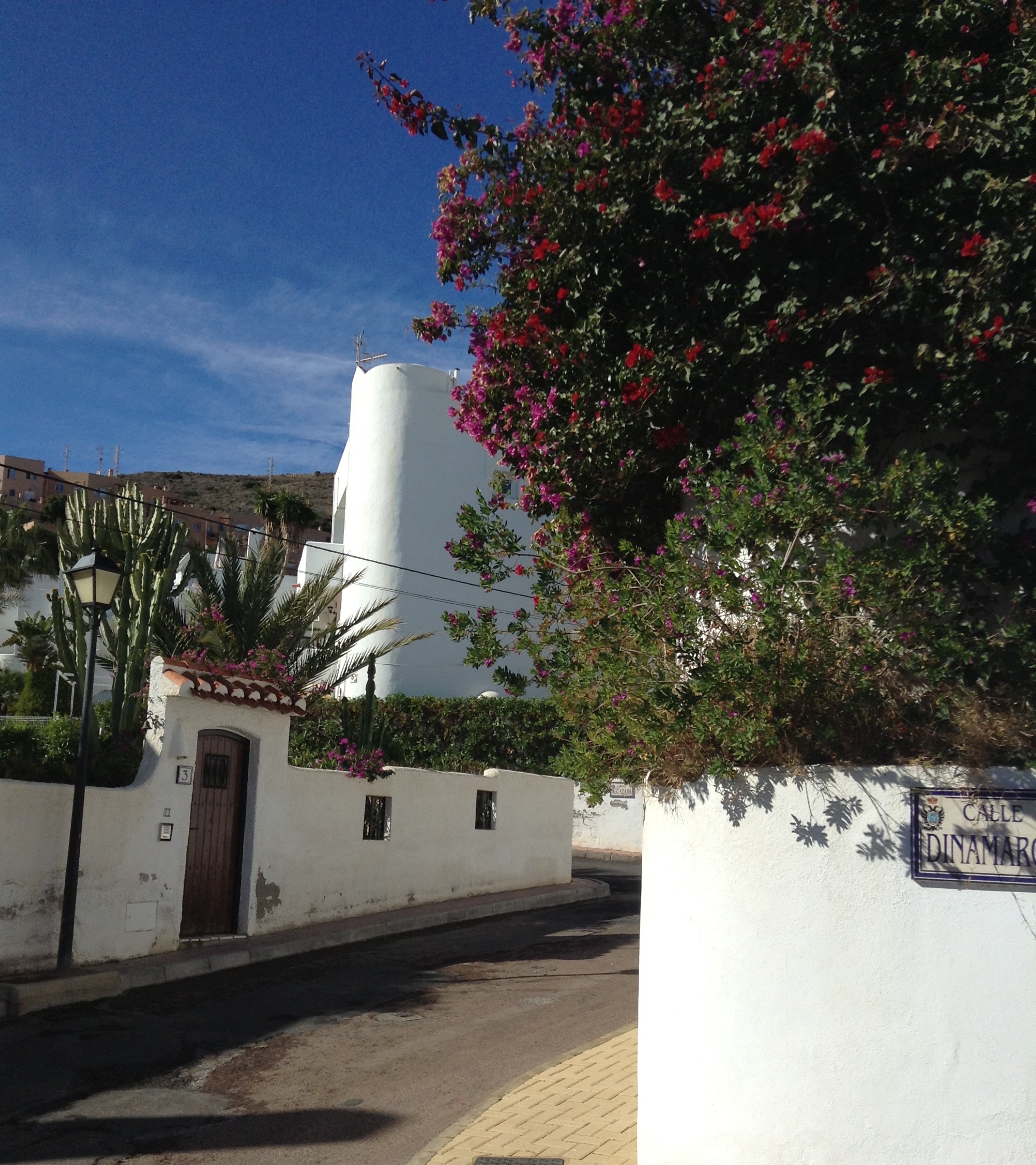
Most of the houses here are vacation homes. Whitewashed walls combine with red tiled roofs, cacti and colorful bougainvillea flowers.
It is February, winter and Mojacar Playa has few people on its beaches. We thus enjoy the natural beauty without the summer population. Warm enough to enjoy the beach, but still too cold for actual swimming. (That said, we do jump in to the icy waters one day and get quite a radically refreshing jolt.)
Mojacar is a “jumping off” point, as it lies on the northern edge of the immense Cabo de Gata park, Andalusia’s largest coastal protected area with wild arid landscape. It is wilder beaches for which we have a distinct preference. (Nicaragua, where we lived for six years, is graced with many naturally wild beaches where the sand leads to trees and cliffs, rather than concrete. And it is this kind of a beach that we are in search of… )

Sunset on our first night in Mojacar Playa.
Destination: Playa de los Muertos. A beautiful beach near the coastal town of Carboneras, Playa de los Muertos (Beach of the Dead), owes its name to the frequency with which historically came to its shores the bodies of pirates, dragged by ocean currents that converge at this site.

Walking to Playa los Muertos (Beach of the Dead. So named after the many pirates bodies that got washed ashore centuries ago. Only access to the beach is along a foot path through the scrub and down to the waves.
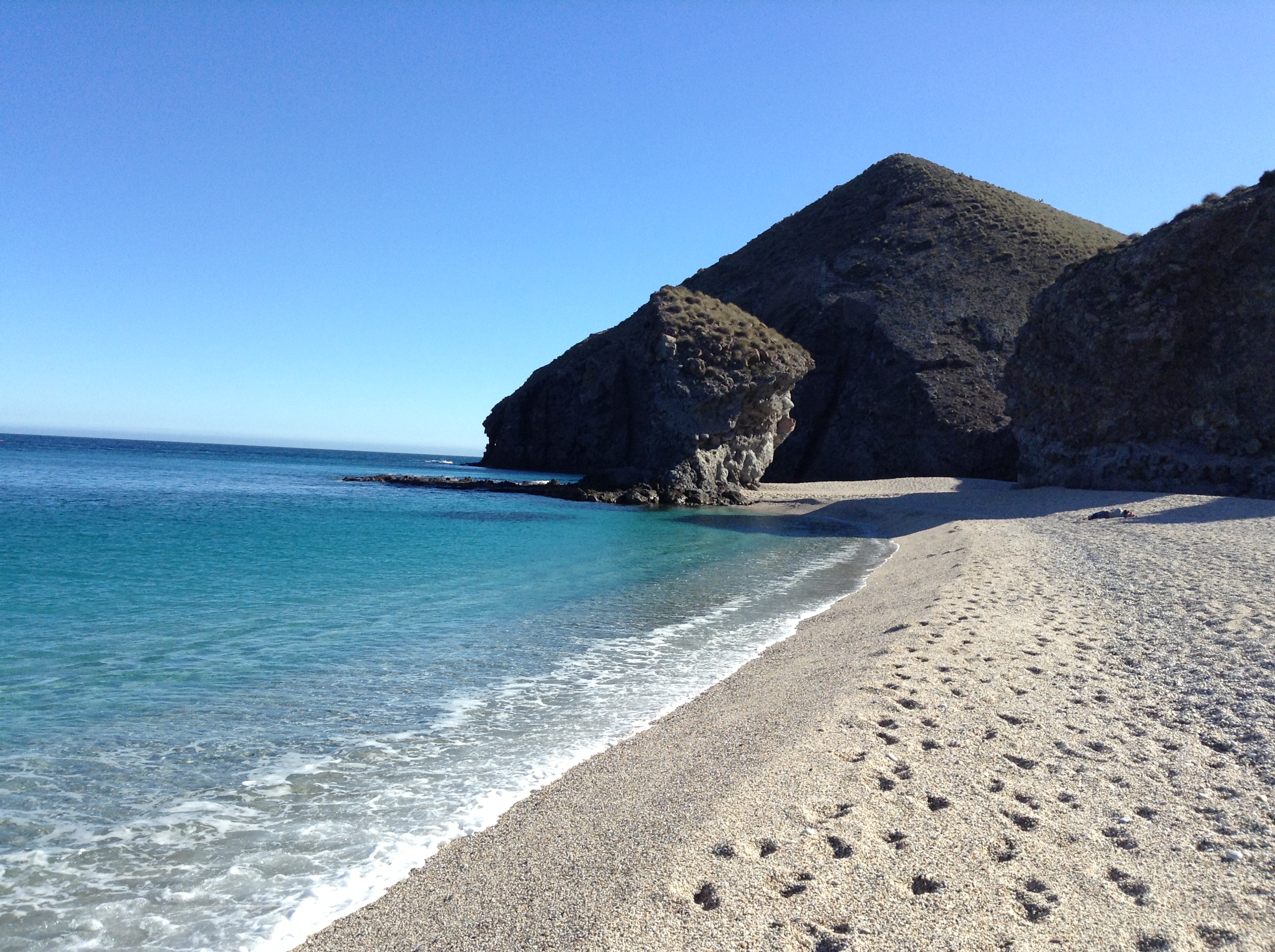
Dramatic turquoise blue, multi colored pebbles contrast with the dark cliffs and vegetation. The pebble beach is made up of an incredible array of semi-precious stones, such as quartz and other glittering and bright colored stones.

Childs pose transformed into Mountain pose.

Perfect lunch of the freshest scallops grilled with lemon and butter.
Destination: Genoveses Beach! We are excited to discover the Cabo de Gata park, which we do with a rented car. Oh what a luxury after traveling by bus and train, to have our own wheels. The Cabo de Gata part is now a UNESCO Biosphere Reserve.
Traditional industries in the region have included gold mining, salt production, small scale fishing, extensive cereal growing and milling, the harvesting of palm hearts and fruits like the prickly pear cactus.
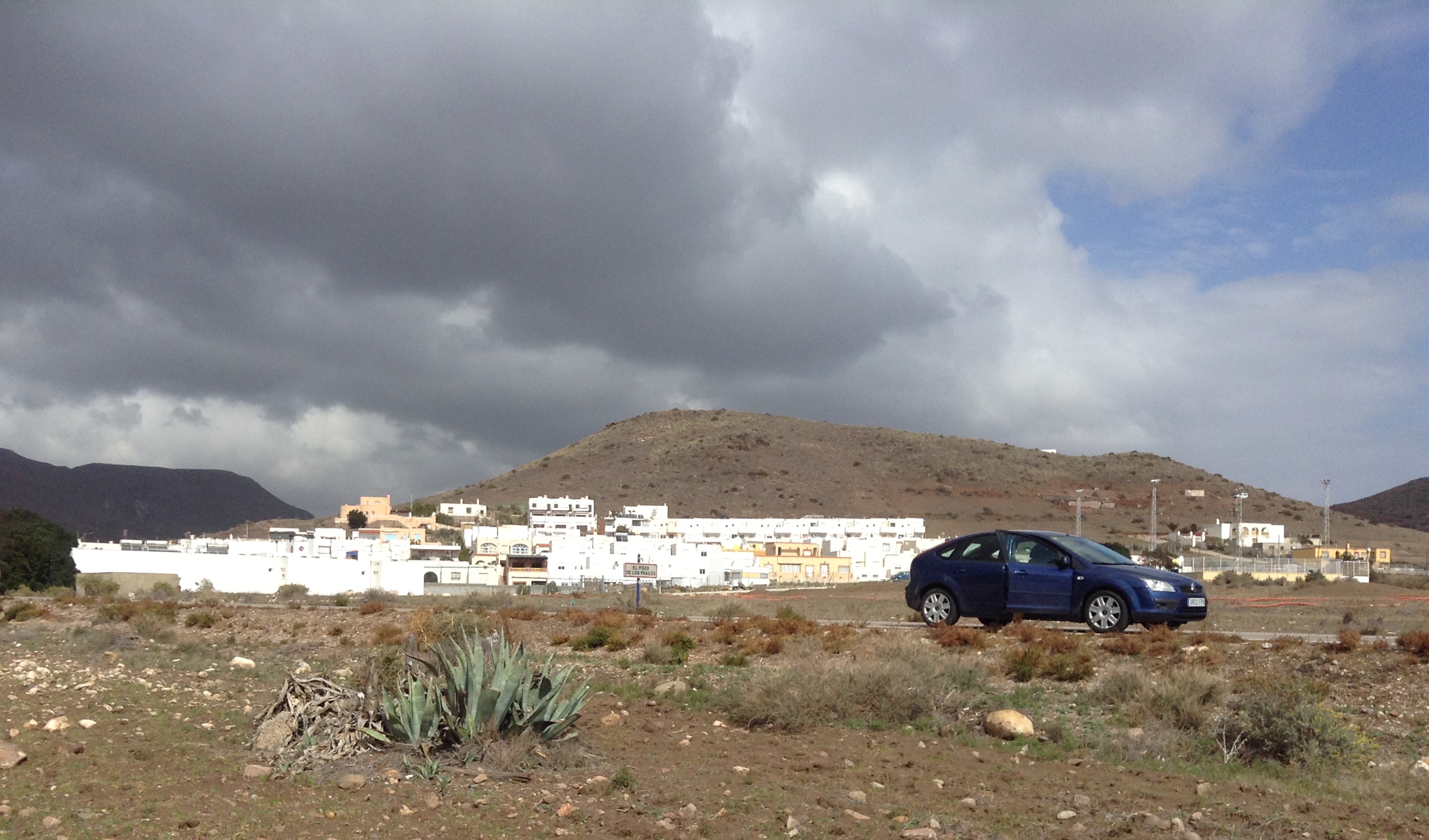
The drive in this area surrounding Almeria, is through arid desert-like terrain, mountains and aloes… combined with small whitewashed villages and port towns. We have wheels!
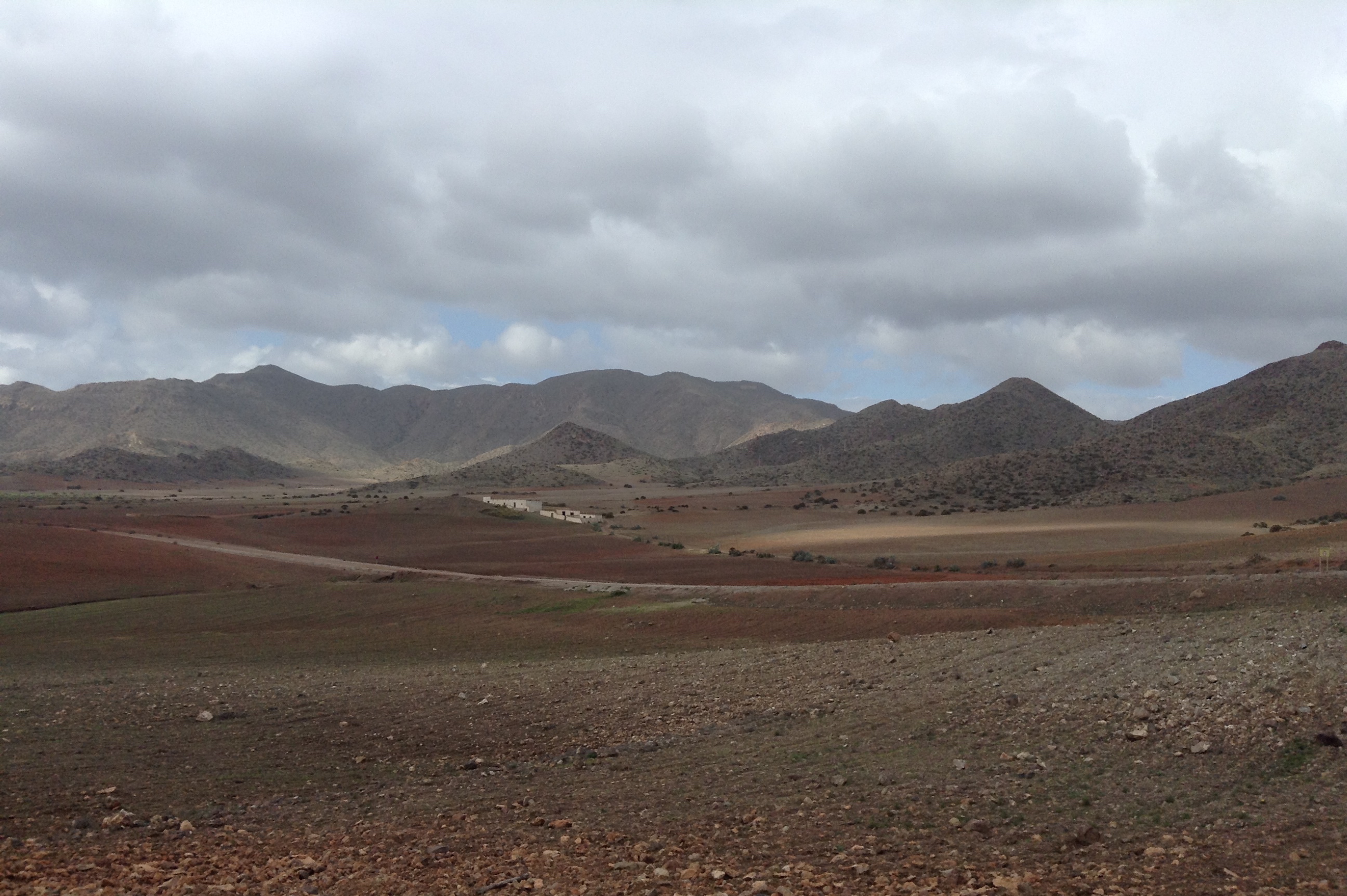
An incredible view over the Cabo de Gata natural park after leaving the port town of San Jose.

View across the valley towards the ocean. Not a building in sight!
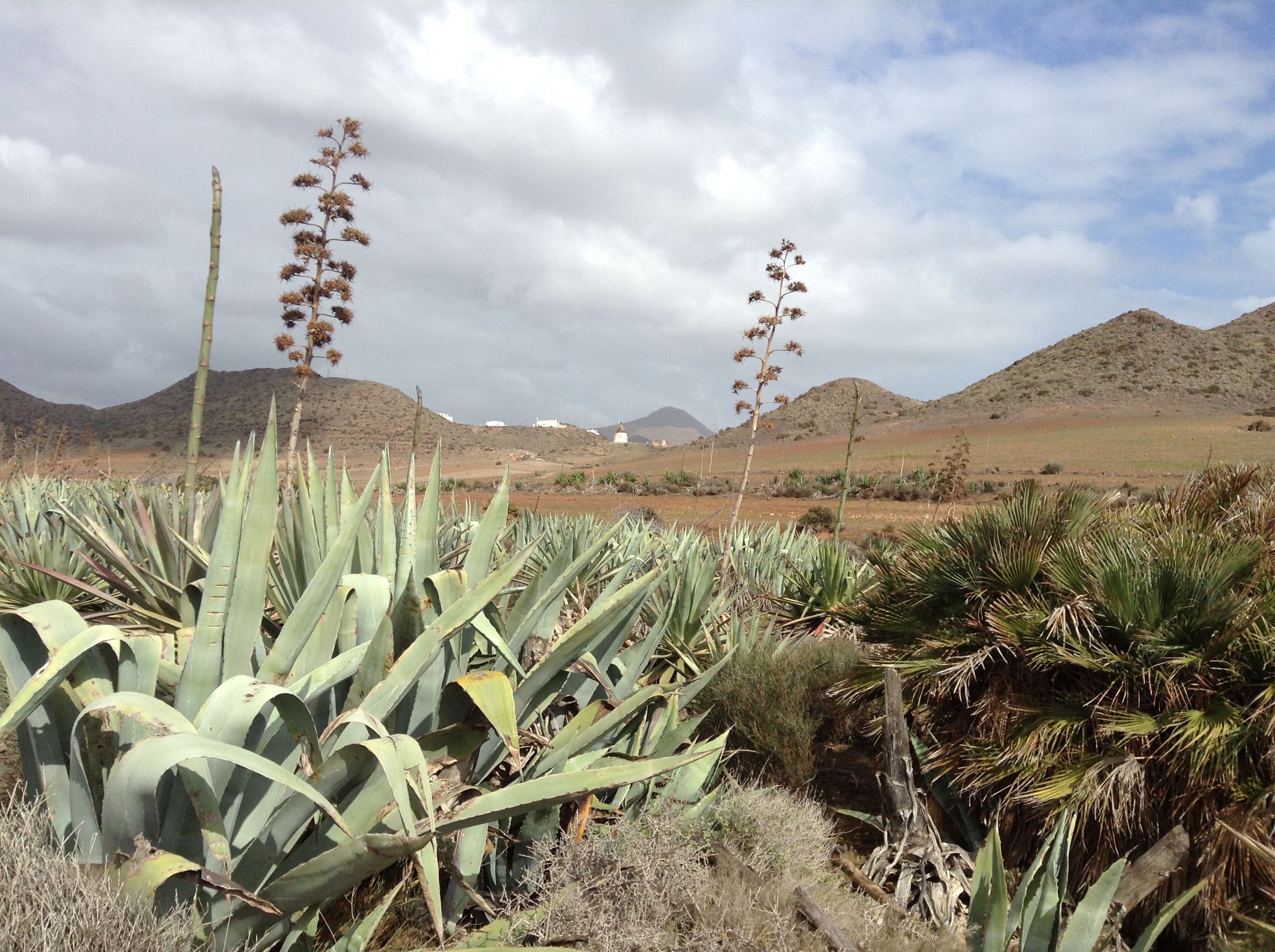
Grand Agave aloes grace this terrain. Since the middle of the Century, aloes have been valued for their Agave syrup, an alternative to sugar.

The area is also full of “fields” of prickly pear cactus. In Essaouira, Morocco, a month earlier we ate the fruit of this plant which was sold on the streets. Here there is so little rain, that many of the cacti flowers have dried out and even some of the actual cacti leaves have dropped off the plant.
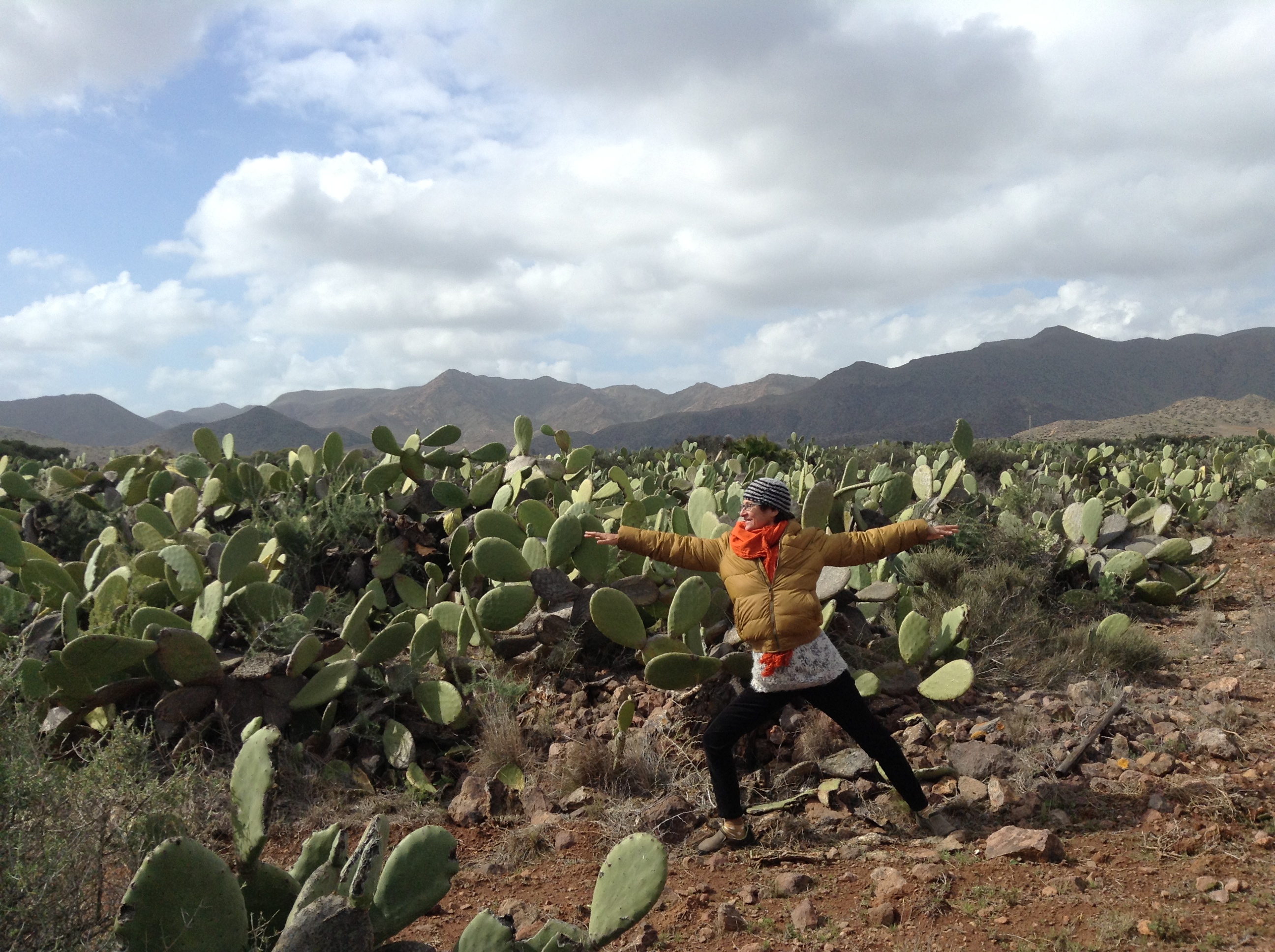
Warrior pose in a field of Cacti with the mountains behind.
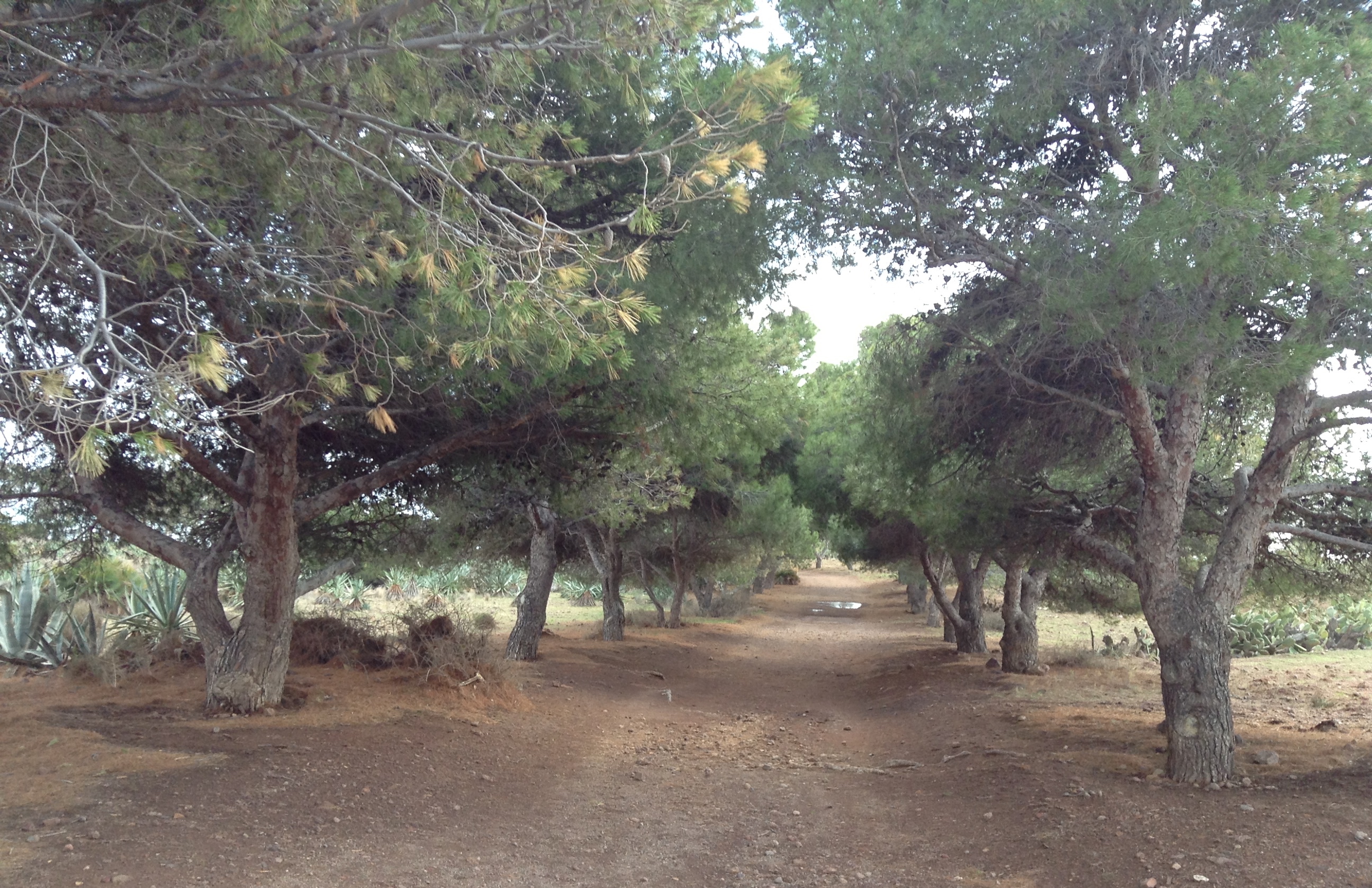
Pine trees on either side form the entrance to Genoveses Beach.
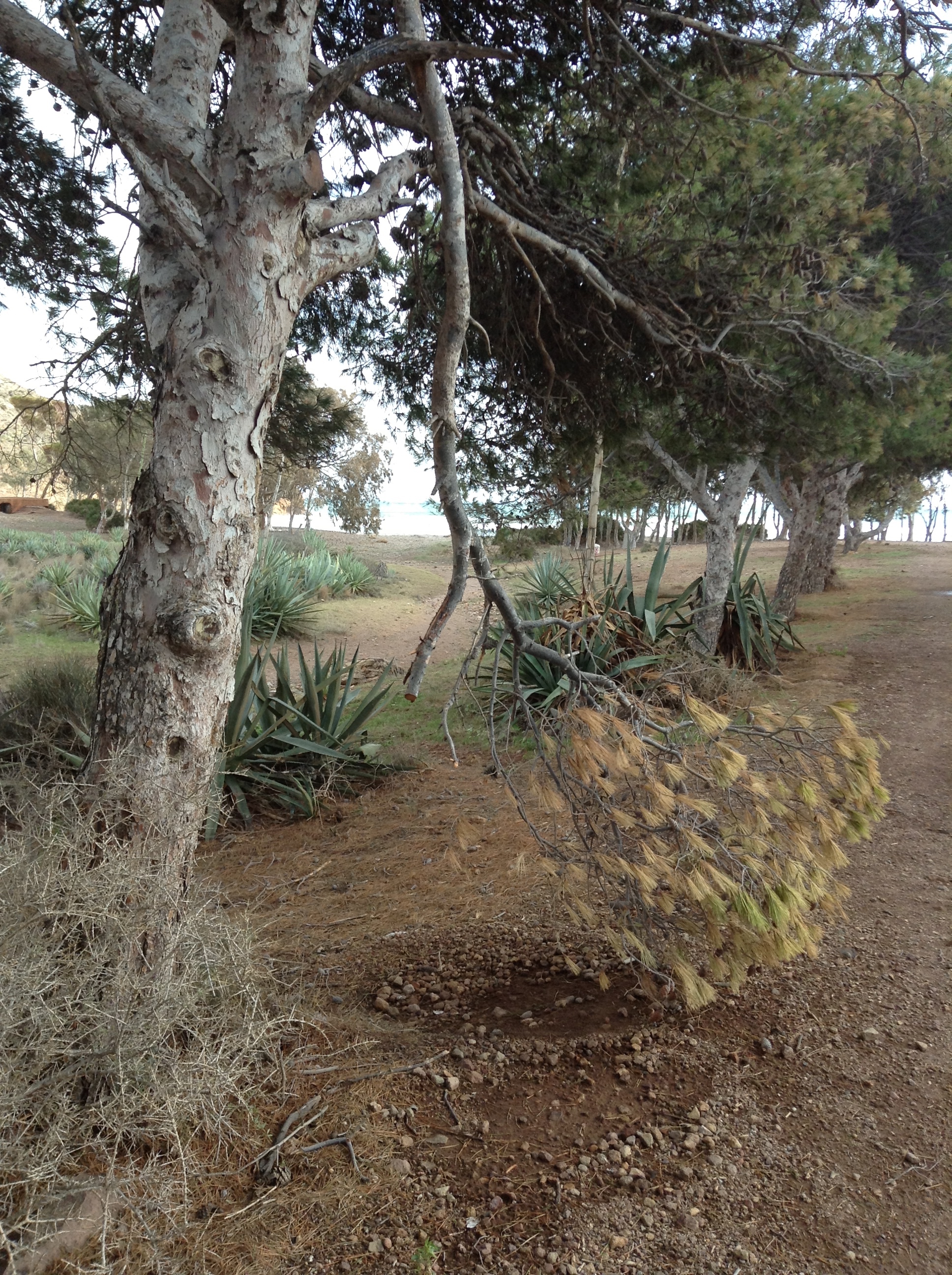
Such a treat to find pine trees right behind the beach!

Eucalyptus branches create modern sculptural forms, through which there is the Sierra Nevada mountain range (the highest mountain range in Spain) behind and the Mediterranean ocean in front.
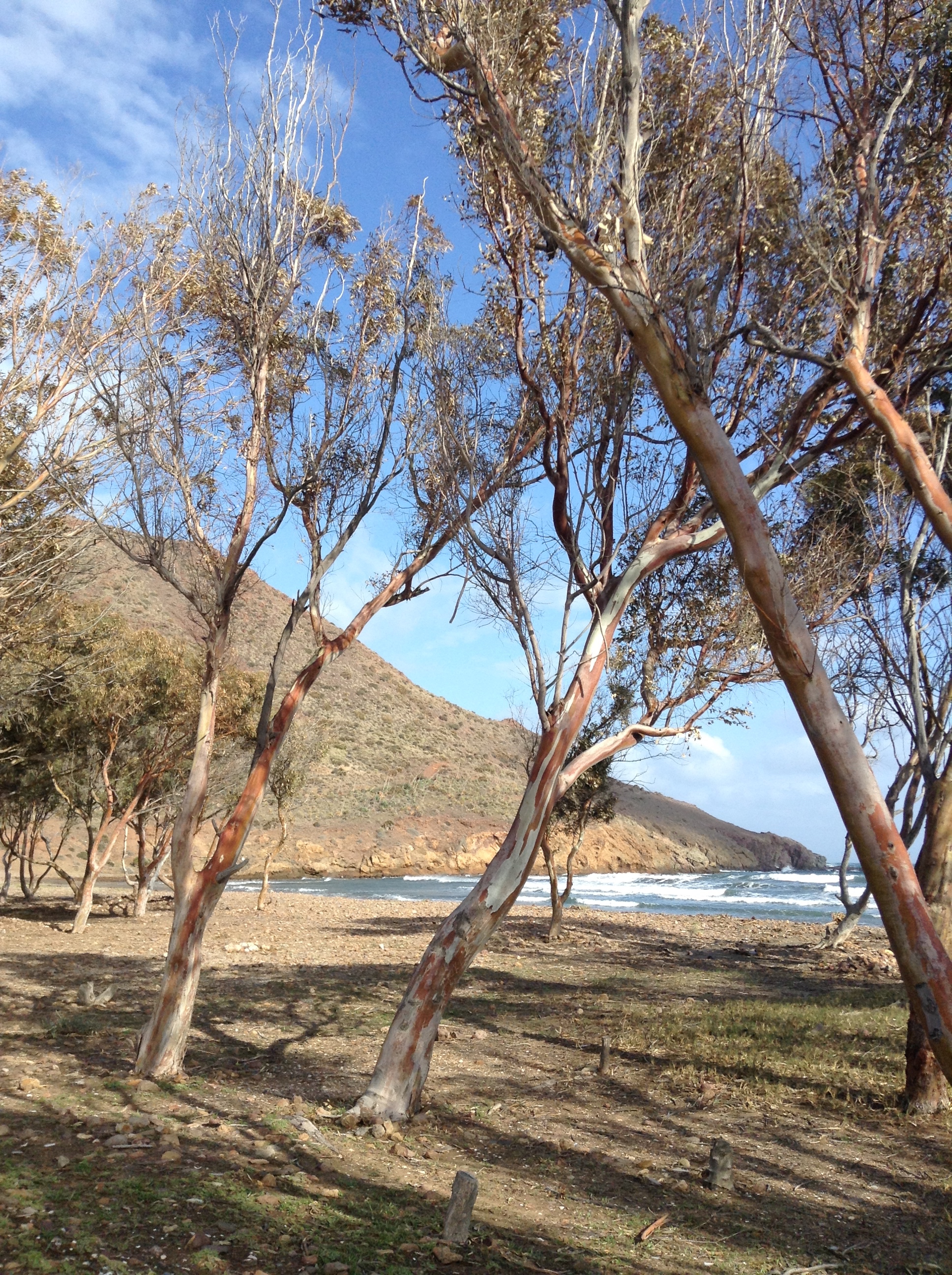
A small forest of Eucalyptus trees on Genoveses Beach. This is the kind of beach we love ~ no buildings anywhere in sight! To quote David Wolfe: “The human spirit soars when we encounter nature untouched by the hand of man”.

A picnic with produce from the weekly organic farmers market in Mojacar. Oranges, tangerines, juicy pears, sweet long radish that look like carrots, cheese and pea pods.
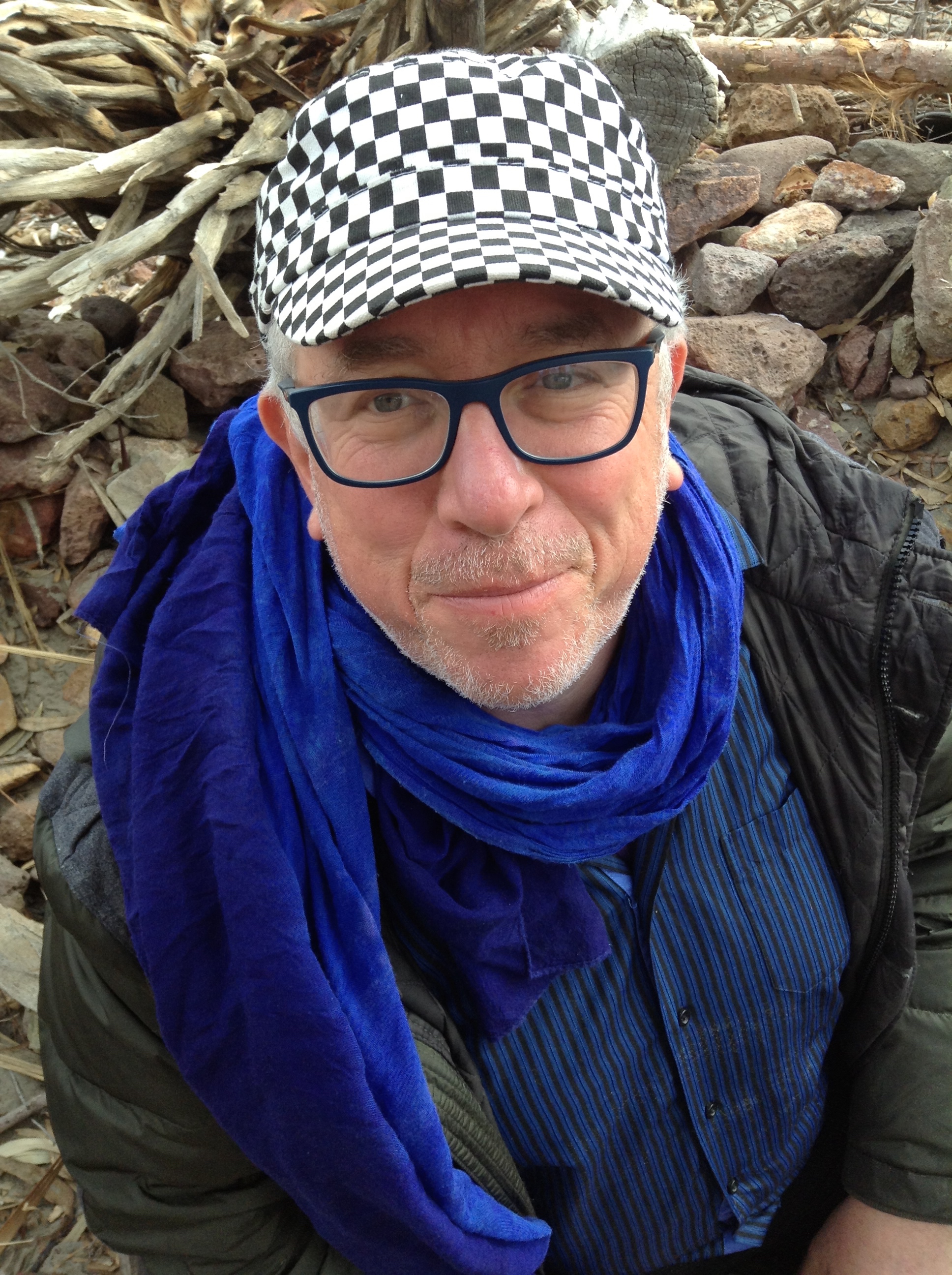
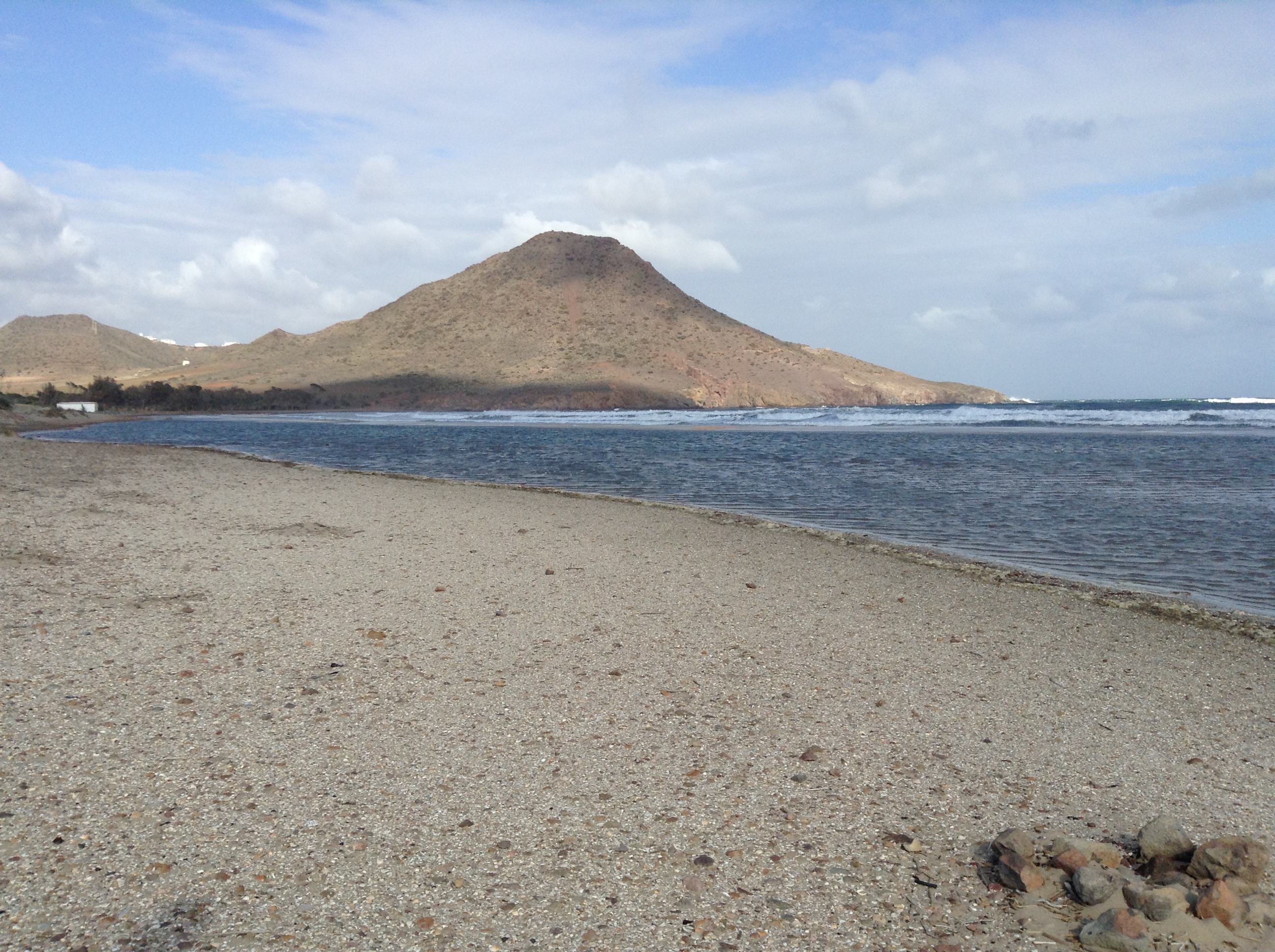
This part of the beach is very reminiscent of Nicaragua ~ in fact, it looks very much like Volcano Concepcion on the island of Ometepe.
We find a perfect spot for doing yoga. Overlooking the beach, surrounded by agave aloes. Waves on one side, mountains behind us on the other. Bliss!
We fall in love with the protected beach and surrounding hilly terrain around Playa Genoveses, a few minutes from San Jose, a port village ~ a smaller, quainter version of Mojacar Playa.

Argave aloes sweep gracefully into the sky.




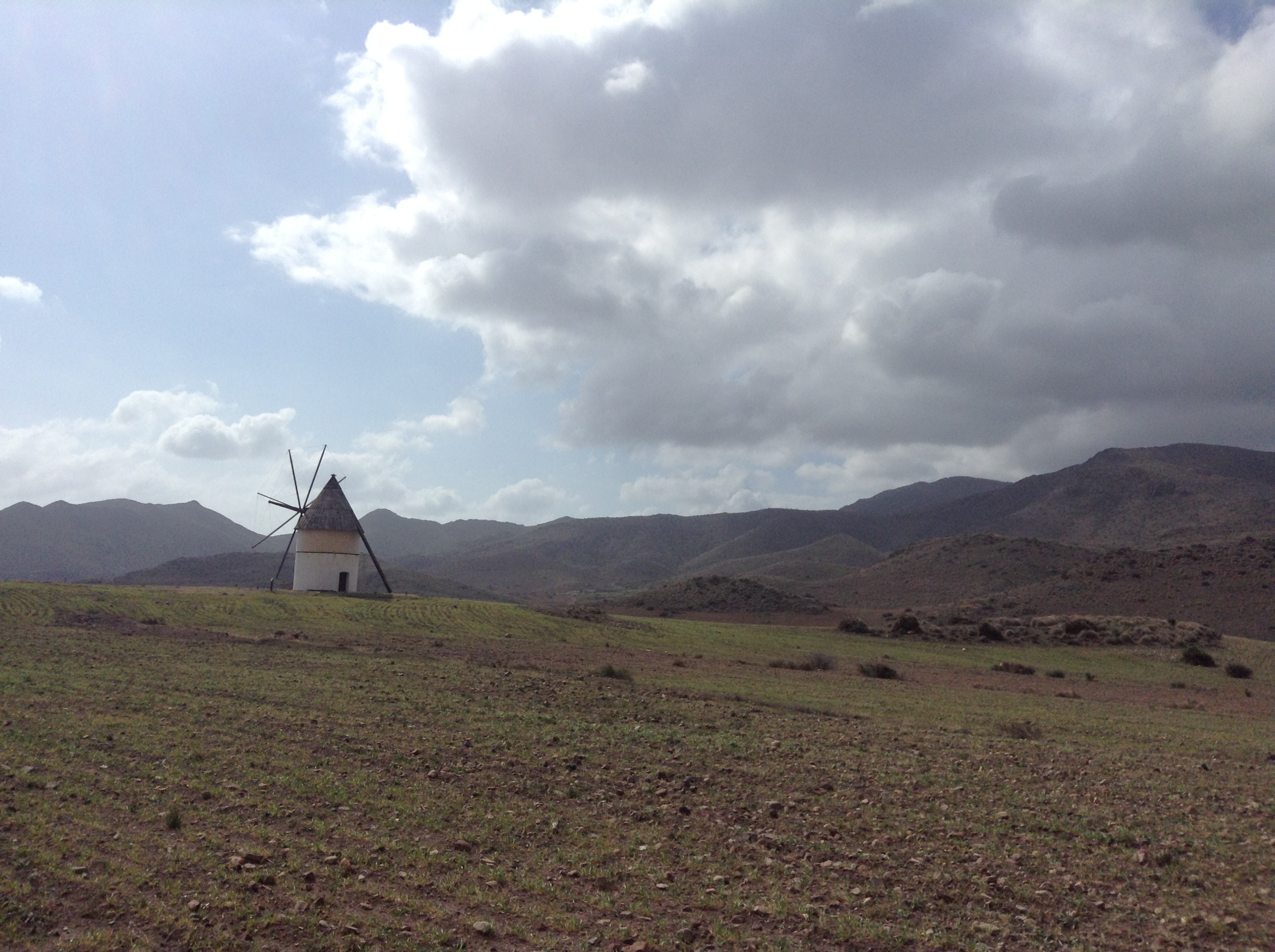

OK i’m going to need to make it to this place in the near future. The pictures are beautiful…they make me miss the sunshine over here in cold cold Northern Navarra.
For sure! It is such a good spot for breaking up the winter cold. Especially the beaches near San Jose.. For us its chilly after years of living in a tropical climate, but no doubt way warmer than a lot of Europe and the U.S.
hi, you beautiful people, looks like you are having a great time, thanks for the blogs,
inspiring and informative!
x x x x x
sal and yos
Thanks Sal and Yos…glad you are enjoying! So good to hear from you! xxxx
Looks and sounds like a very worthwhile destination. Should be on everyone’s bucket list. Thanks for sharing those great photos!
So glad you enjoyed the photos! Thanks for your positive feedback Helga! We have a few more days of beach and sun and natures positive energy before we head on to Granada, Spain. Stay posted!
Great photos. Mojacar reminds me so much of our 2 week stay in Nerjar on the Costa del Sol. So beautiful.
Alison
Hi Alison, thanks! Glad you enjoyed the photos! That region is very close by and both are reflective landscape wise of the very close proximity to Africa.
Far from the boreal climes of NA, I wander as if I am once again with you dear friends, so until that time and time again I will follow the dream walkers.
Reunion will be sweet indeed!